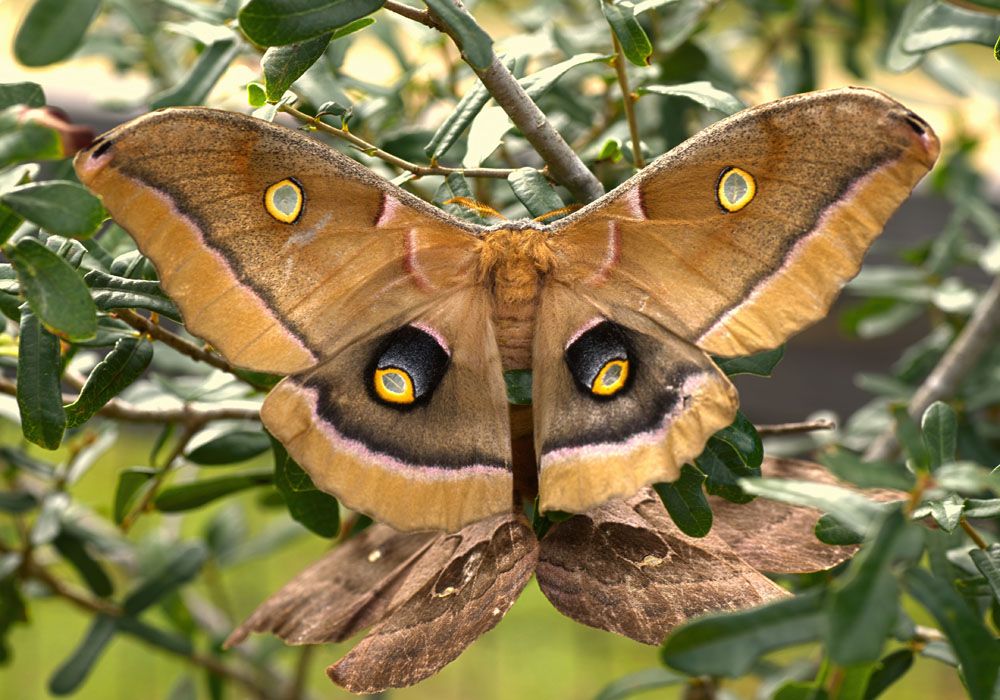
Polyphemus Moth – Antheraea polyphemus
Polyphemus Moth: Antheraea polyphemus
Common Name: Polyphemus Moth
Latin Name: Antheraea polyphemus
Appearance:
The Polyphemus Moth is a broad, impressive species with a wingspan that can range from 4 to 6 inches (10 to 15 cm). The characteristic eye-shaped patches on its hindwings make it famous, and it’s thought they are defence mechanisms to ward off predators. The forewings feature scalloped, wavy margins, and the wings are usually reddish-brown with tan undertones.
Host Plants:
The caterpillars of the Polyphemus Moth feed on several deciduous tree species, including willow, birch, oak, maple, and other broadleaf trees.
Territory:
The Polyphemus Moth is found throughout North America, ranging from southern Canada down to Mexico.
Damages caused by Polyphemus Moth:
Adult Polyphemus Moths don’t hurt plants directly. However, the caterpillar stage is sometimes seen as a pest because of the way it eats. Many worms can kill trees, which could be a problem for people who farm or work in forests.
Life History and Habits:
- Eggs:Girls of the Polyphemus Moth lay their eggs on the leaves of plants that they eat. They usually have small, pale eggs that hatch after 10 to 14 days.
- Larva:The caterpillars are giant, green, and have a pattern of spikey tubercles running along their bodies. They eat the leaves of host plants like crazy. They moult several times as they grow.
- Pupa:The worm makes a cocoon out of silk and leaves when fully grown. It changes into a pupa inside the cocoon, the stage where it changes into an adult moth.
- Adult:Polyphemus Moth emerges from the cocoon after a few weeks. Temperature and humidity are two of the things that determine the exact time. Moths are sexually different, with males having more enormous, bushier wings than females.
- Reproduction:The adult moths do not feed; they only mate and lay eggs. The female will lay her eggs on host plants after mating, and the cycle starts again.
